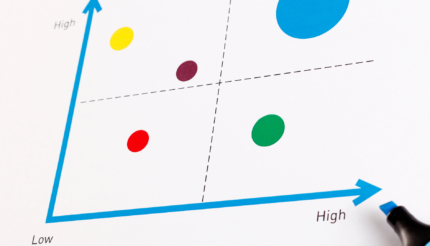It is common when running a business to feel daunted by the seemingly never-ending and shapeshifting to-do list you create for yourself. Knowing where to start can be an overwhelming daily task in itself, and the thought of even opening your laptop to attack can fill you with dread.
Perhaps some of the problem doesn’t lie in your own organisation, but in the ‘chaos of the modern workplace’ (as Janine Schindler suggests in Forbes) meaning you never truly catch up. But while you’re undoubtedly aware of it, this constant feeling of overwhelm will raise your stress levels, which is completely unsustainable and will inevitably lead to burnout.
So, to proactively avoid burnout, and to create a viable system you can turn to, below are 3 ways to transform how you manage your to-do list.


Really study your due dates and prioritise what needs to be dealt with imminently. This will help to remove low priority tasks from the forefront of your mind and allow your focus to lie solely on the immediate task at hand.
As well as prioritising, it’s important to mark and retain completed items on your list as you go, as this is an excellent way of tracking progress and holding yourself accountable. This will also push you to maintain your productivity, and provide a small confidence boost that comes with ticking something off.

Sometimes we put off processes or tasks on our to-do list because they require the completion of another task to get finished themselves. And unlike computers, we can’t undertake many processes at once – we need time to switch between contexts. Remember you are only human!
Tasks with a common goal, or that align with one project focus, can be categorised into context based groups. Grouping these similar tasks into batches enables you to avoid ‘context switching’. which will require you to think differently and interrupt your flow. Refining your to-do list this way will greatly improve your efficiency at work.

Omri Hurwitz from Entrepreneur suggests that professionals spend over 2 hours a day on checking their inbox alone, when the recommended time should be no more than 30 minutes. Although it may feel like work, waiting for responses or mindlessly scrolling your emails is a prime example of procrastination, and a huge distraction from the tasks you need to complete.
Allot yourself time to check inbox, at several points in the day so you can follow things up. If you’re an iPhone user, utilise and customise your Work focus mode, so that irrelevant notifications and distracting applications are hidden for a set time. Managing these distractions will allow you to work through your tasks methodically and with a clear head.
If you’d like to chat about these ideas further, please comment! Or contact me at paulmccarthy@actioncoach.com




